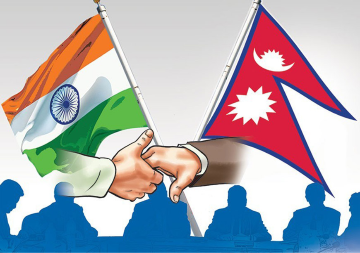
< style="color: #000000">Australia recently released a report on its economic strategy for India recommending that India should be put in its top three export markets and be made the third largest destination in Asia for the country’s outward investment. The report titled ‘An India Economic Strategy to 2035’ — authored by former Australian High Commissioner to India, Peter Varghese — was greeted by Australia’s former Prime Minister Malcolm Turnbull.
The report states that it sees Australian exports to India grow from USD 14.9 billion in 2017 to around USD 45 billion in the next 20 years, and outward Australian investment to India rise from USD 10.3 billion to over the 100–billion mark, thereby reflecting a transformational expansion of the relationship. Through its ninety recommendations, the report however noted that opportunities would not come easy. The government would require a sharper national focus. Patience, perspective and preparation is needed to engage with India.
The report identifies 10 sectors and 10 states in an evolving Indian market: where Australia has competitive advantages, and where it should focus its efforts. These are divided into a flagship sector (education), three lead sectors (agribusiness, resources, and tourism) and six promising sectors (energy, health, financial services, infrastructure, sport, science and innovation).
Indian diaspora in Australia is expected to play a big role in building these economic linkages, highlighting the importance of the largely prosperous 700,000 strong Indian–origin population in Australia. The focus on states reflects that India is not seen as a single economy, but as an aggregation of very different state economies, each growing at different rates, driven by different strengths, led in different ways — and likely to continue to be uneven in their progress.
Australia’s new India economic strategy shows that India’s growing economic weight makes it an unavoidable economic partner, despite the challenges in navigating its market. It is not surprising that Australia wants to press the reboot button.
Today, India is the fastest growing major economy in the world and offers immense opportunities for businesses and economic partnerships. Australia’s new India economic strategy shows that India’s growing economic weight makes it an unavoidable economic partner, despite the challenges in navigating its market. It is not surprising that Australia wants to press the reboot button.
Many countries are reformulating their economic and foreign policies to engage with India. The India story is extraordinary. It is expected that by 2024, India will overtake China as the world’s most populous country. India has the world’s largest youth population, but isn’t fully capturing its demographic dividend.
Over 30% of India’s youth are NEETs (not in employment, education or training), according to the Organisation for Economic Co-operation and Development (OECD). By 2025, one–fifth of the world’s working age population will be Indian. By 2030, there will be over 850 million internet users in India, and by 2035, India's five largest cities will have economies comparable to the size of middle income countries today.
Over the past decade and a half, India’s economic growth, its appetite for resources, energy demand, skill development, technical know⎯how and investments have made it an important trade partner and export destination for Australia. There is no market over the next 20 years which offers more growth opportunities for Australian business than India. IMF Economic Outlook reports: “The Indian economy is expected to grow at an annual rate of 7.4% in 2018 and 7.8% in 2019, lifted by strong private consumption, structural reforms and implementation of the national goods and services tax.”
India–Australia trade
The India Economic Strategy report acknowledges that though India is already in the first tier of Australia's diplomatic relations, its economic relationship is stuck in the second tier.
It notes that bilateral merchandise trade was only USD 19 billion in 2015–16 (compared with USD 150 billion for China), making India Australia's 10th largest trading partner. Many Australian resource companies, keen to invest in India, have found themselves locked out of the market. Merchandise trade has declined by 50% in value since 2010. Australia is ranked 33rd in countries to whom India exports, and India is no longer in Australia’s top–ten two–way trade partners. Investment is thin and largely one–way, i.e. from India to Australia. Australian firms remain uneasy about doing business in India. Their biggest concerns are corruption, red tape, enforcement of contracts, and cost of doing business.
The India Economic Strategy report acknowledges that though India is already in the first tier of Australia's diplomatic relations, its economic relationship is stuck in the second tier.
An elusive CECA
For many, the remedy to declining trade and investment was a preferential trade agreement, just as Australia has done in recent years with Japan, South Korea and China. But, this has not been successful. Despite years of negotiation, a Comprehensive Economic Cooperation Agreement (CECA) remains elusive. The negotiation for the CECA between India and Australia, was started in 2011 to provide fillip to trade and investments between the countries. Several rounds of negotiations have been completed for liberalising trade and services regime, besides removing non–tariff barriers and encouraging investments. But, both the sides have yet to resolve issues pertaining to goods and services. There have been nine rounds of negotiations so far on CECA. The last round was held in September 2015.
Such an agreement is always a challenge between countries that are at different levels of development and the gap between India and Australia is substantial. Given the poverty levels and backwardness, India has to be careful about what it opens up to with foreign trade and investment. With massive underemployment among the youth, more imports and setting up of high technology industries, will hit Indian employment. Indian agriculture is in crisis. More import of agricultural products would pose severe problems for the farmers who are agitating in a big way across the country.
The report concedes that India and Australia are “too far apart” to conclude the bilateral Comprehensive Economic Cooperation Agreement (CECA) in the near⎯term. It states that Australia should focus on securing some of the objectives of the CECA with India through the Regional Comprehensive Economic Partnership (RCEP).
Geostrategic compulsions
The paper came soon after a foreign policy white paper by the Australian government, which made a big space for relations with India, pushing India to among Australia’s top strategic partners.
Both India and Australia are situated in the most dynamic region on the planet where the centre of economic and strategic gravity is shifting to the Indo–Pacific. India and Australia are wary of China’s assault on maritime security and freedom of navigation in the Indo–Pacific region. These common concerns have strengthened the need for greater maritime cooperation between the two nations.
Both India and Australia are situated in the most dynamic region on the planet where the centre of economic and strategic gravity is shifting to the Indo–Pacific.
Opportunities and challenges
Australia’s interest in developing a stronger economic relationship with India comes at a time when Australia is increasingly aware of its economic exposure and potential vulnerability to China. It also comes at a time when the Australian government acknowledges the need to “catch up.” In his introduction to the report, Peter Varghese mentions:
Timing has always been a challenge in Australia’s relationship with India.. Today the risk is that we are not moving fast enough and Australia might fall behind as other countries accord India a higher priority.. We cannot afford to lose momentum or to assume that the logic of complementary interests will be enough to take the economic relationship to the level it needs to rise.
The India Economic Strategy report categorically states:
India is too complicated for its growth story to be linear. Its economic progress will be uneven and incremental, constrained by the political compromises demanded by a diverse democratic federation, held back by thinly resourced institutions, burdened by a bureaucracy too susceptible to arbitrary interference, dented by endemic corruption and shaped by a political tradition which puts much greater faith in government intervention than the efficiency of markets. There is no point lamenting these constraints. They are wired into the Indian experience. We need to understand them, but also acknowledge that they are changing and look beyond them to grasp the significance of the opportunities created by a growing Indian economy. India needs to be understood on its own terms. It will always march to its own tune.
The way ahead
The India–Australia bilateral relationship has been largely a case of “one step forward, two steps back” — though one witnesses a positive shift in relations since the visit of Indian Prime Minister Narendra Modi to Australia in November 2014 — after a gap of 28 years. PM Modi in his speech to the Joint Sitting of Parliament in Canberra in November 2014, stated that Australia was no longer at “the periphery of India’s vision but at the centre of its thoughts.”
The opportunity as well as challenge is that the two nations are at very different levels of development. There can be converging and diverging interests. The future must be woven around the three pillars, which are economic relationship, geostrategic congruence and people⎯to⎯people ties. The glue that can bind this is a sustained momentum.
The views expressed above belong to the author(s). ORF research and analyses now available on Telegram! Click here to access our curated content — blogs, longforms and interviews.




 PREV
PREV


